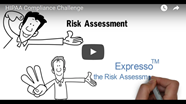HIPAA § 164.402 Definitions.
As used in this subpart, the following terms have the following meanings:
means the acquisition, access, use, or disclosure of protected health information in a manner not permitted under subpart E of this part which compromises the security or privacy of the protected health information.
(1) Breach excludes:
(i) Any unintentional acquisition, access, or use of protected health information by a workforce member or person acting under the authority of a covered entity or a business associate, if such acquisition, access, or use was made in good faith and within the scope of authority and does not result in further use or disclosure in a manner not permitted under subpart E of this part.
(ii) Any inadvertent disclosure by a person who is authorized to access protected health information at a covered entity or business associate to another person authorized to access protected health information at the same covered entity or business associate, or organized health care arrangement in which the covered entity participates, and the information received as a result of such disclosure is not further used or disclosed in a manner not permitted under subpart E of this part.
(iii) A disclosure of protected health information where a covered entity or business associate has a good faith belief that an unauthorized person to whom the disclosure was made would not reasonably have been able to retain such information.
(2) Except as provided in paragraph (1) of this definition, an acquisition, access, use, or disclosure of protected health information in a manner not permitted under subpart E is presumed to be a breach unless the covered entity or business associate, as applicable, demonstrates that there is a low probability that the protected health information has been compromised based on a risk assessment of at least the following factors:
(i) The nature and extent of the protected health information involved, including the types of identifiers and the likelihood of re-identification;
(ii) The unauthorized person who used the protected health information or to whom the disclosure was made;
(iii) Whether the protected health information was actually acquired or viewed; and
(iv) The extent to which the risk to the protected health information has been mitigated.
Unsecured Protected Health Information
means protected health information that is not rendered unusable, unreadable, or indecipherable to unauthorized persons through the use of a technology or methodology specified by the Secretary in the guidance issued under section 13402(h)(2) of Pub. L. 111-5.
Download our Free HIPAA Project Plan.



